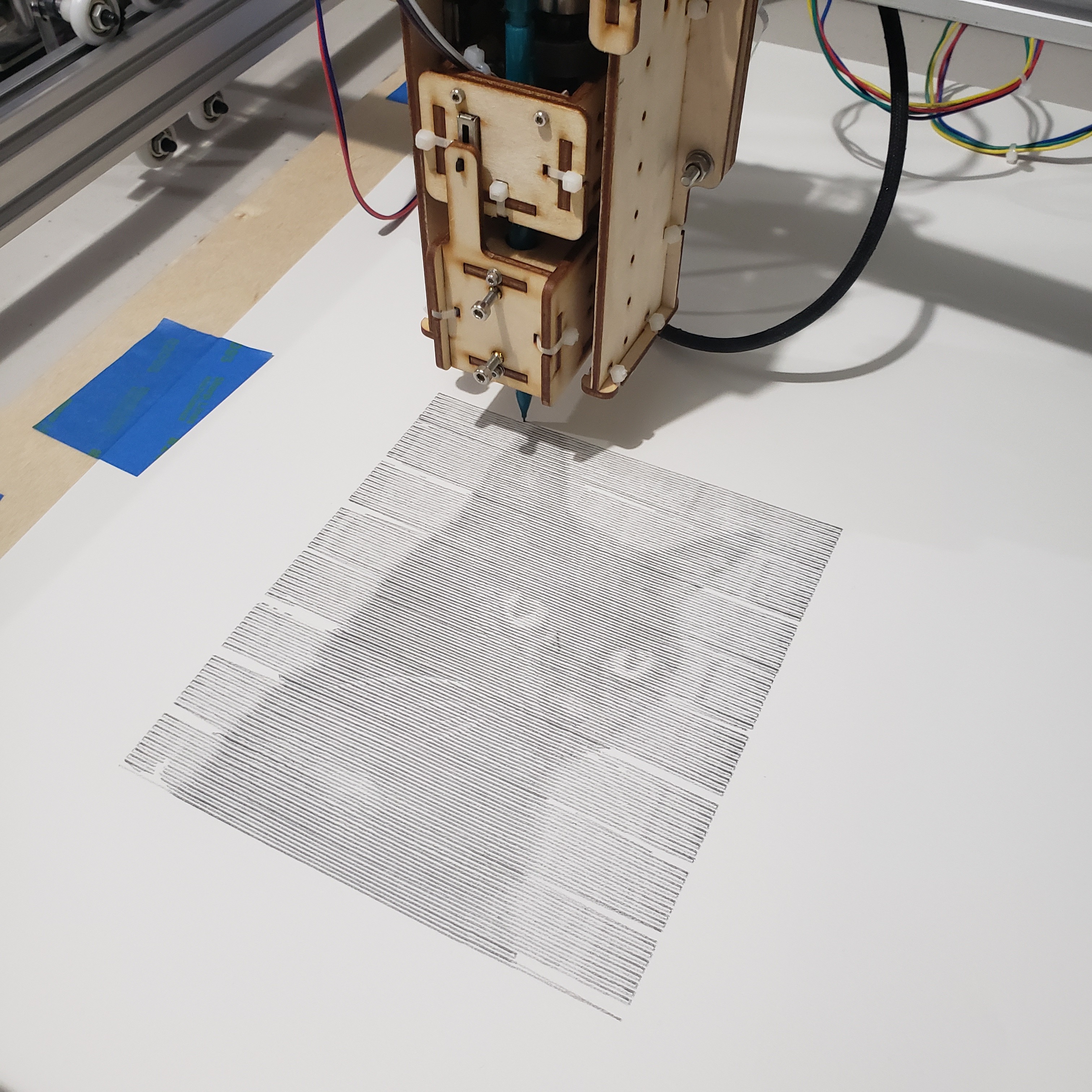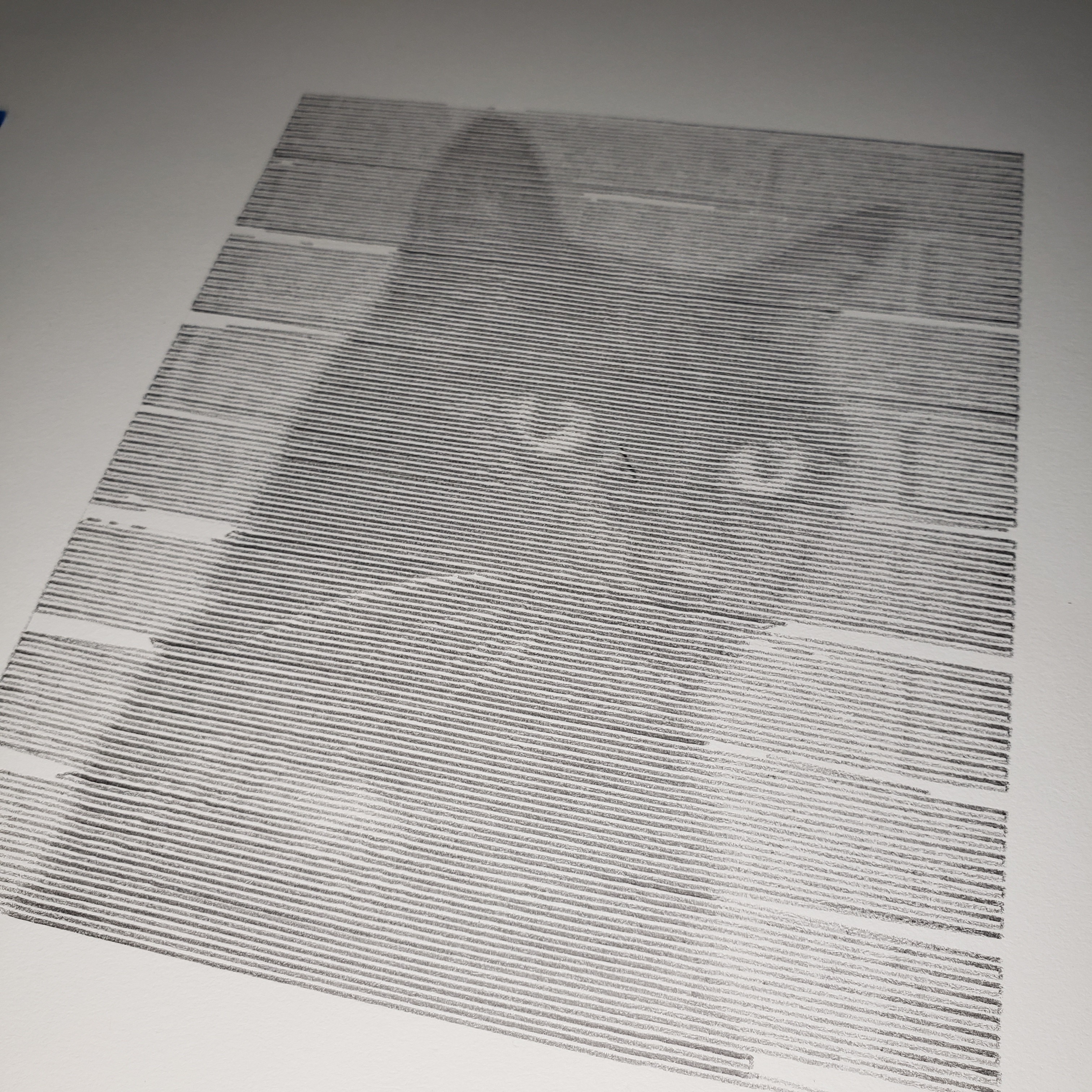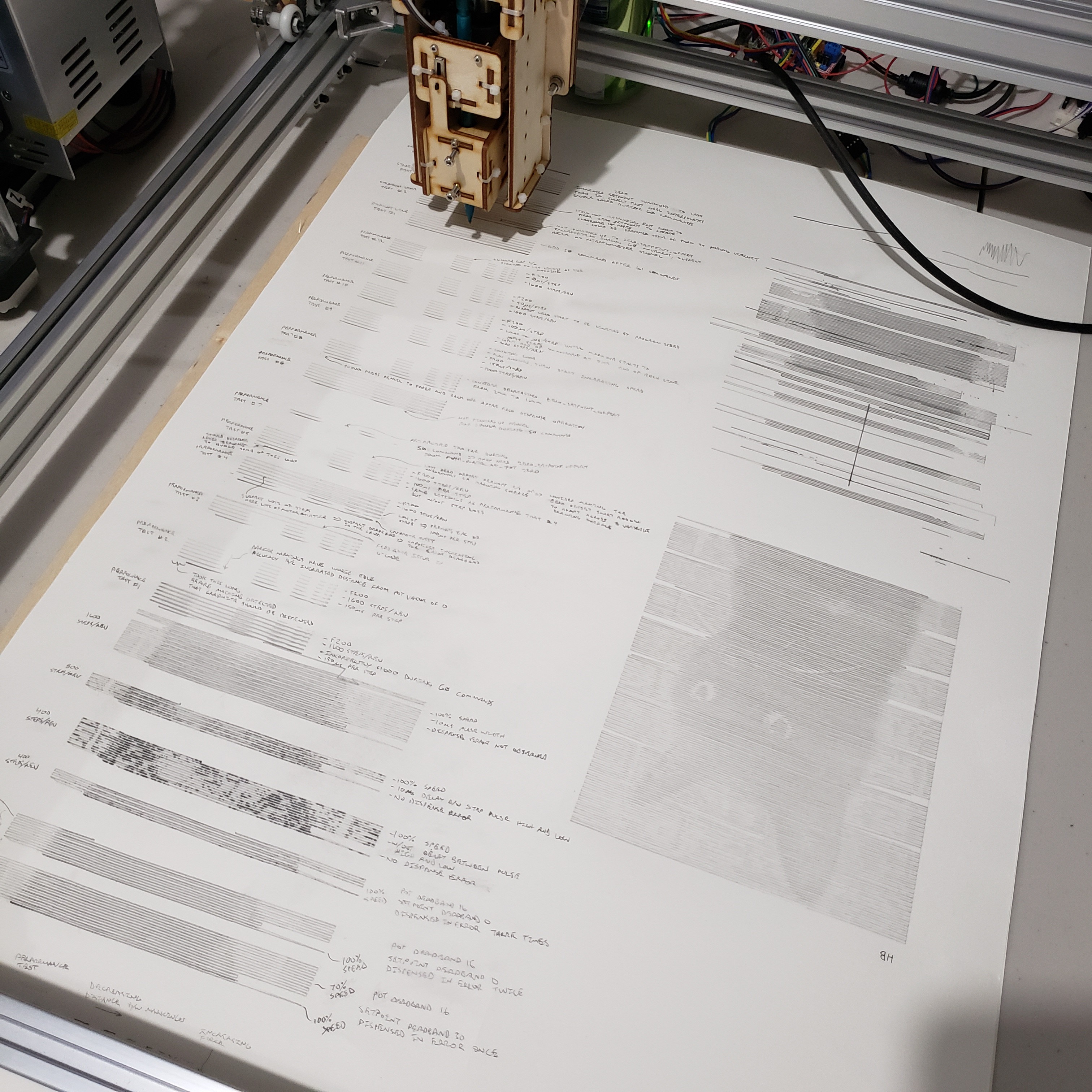


I am incredibly happy with the latest drawing. A huge improvement on contrast and sharper transitions.
Some of the improvements:
- Increased speed of the stepper motor controlling pencil position. Faster the pencil moves, the sharper the transitions are.
- Exponential moving average on the potentiometer reading. This had a huge impact on mitigating the effects of the noise on the potentiometer signal.
- Setting pencil zero position at near zero potentiometer readings. This ensures that position error from missed steps do not accumulate large enough over time to prevent the pencil from being lifted off the paper when a 0 pencil position was commanded.
- Returning to the last position after pencil graphite is dispensed. This ensures no visual artifact on the paper when graphite is dispensed. It just continues where it left off.
Remaining challenges:
- I had to give up on any automated process for detected when more graphite needs to be dispensed because the pencil control stepper motor tends to lose steps at the current speed. I didn't want to run it any slower because it already takes so long. I added a switch to run the graphite dispense routine anytime I saw that the graphite was getting too low.
Options being considered:- I could add an adjustable height non-contact limit switch to the pencil cart. The switch would trigger whenever the pencil was close enough to the paper that additional graphite should be dispensed.
- I could add an encoder on the motor. This is more expensive. I figure if I do this, I might as well just switch to a DC motor for faster speed.
- The system runs so slow because of the response time of the pencil control stepper motor. Options being considered:
- Increase stepper motor speed by decreasing microstepping configuration of the stepper motor driver. My testing so far has shown that motor chatter tends to increase at lower microstepping values, but there is likely still opportunity to increase speed with this approach without influencing draw quality.
- Change to a DC motor with an encoder.
I will likely explore all the options that don't require spending more money on the system before I jump to a DC motor with an encoder. I often learn the most by pushing cheap hardware to it's operational limits.
 John Opsahl
John Opsahl
Discussions
Become a Hackaday.io Member
Create an account to leave a comment. Already have an account? Log In.